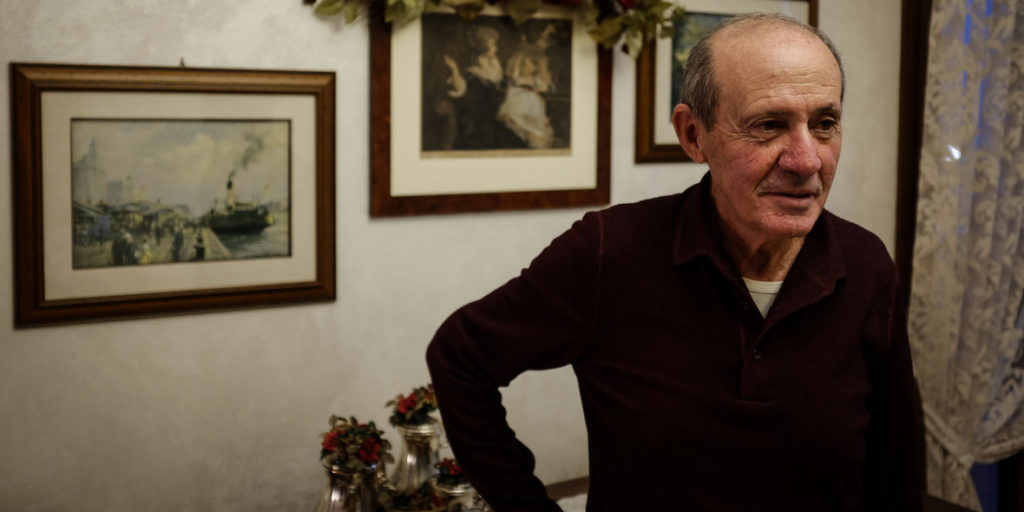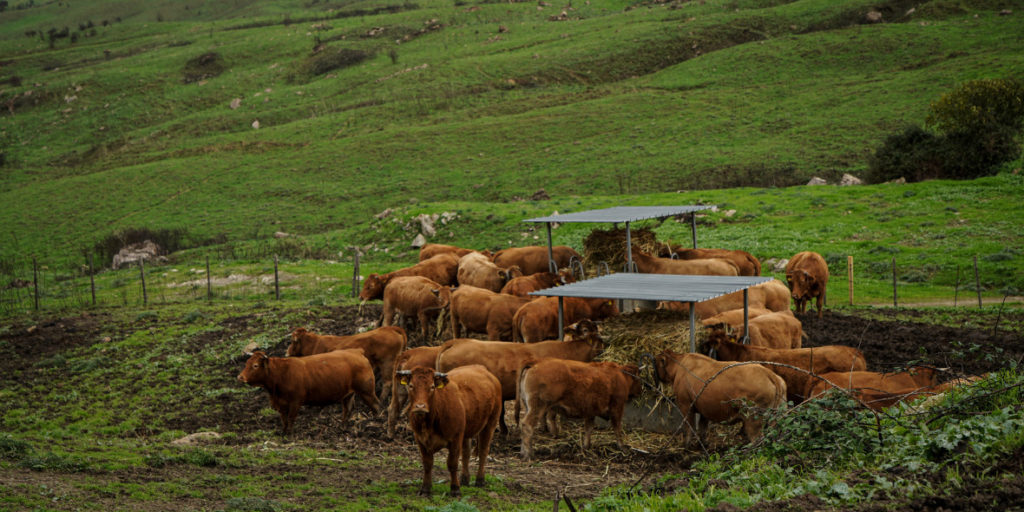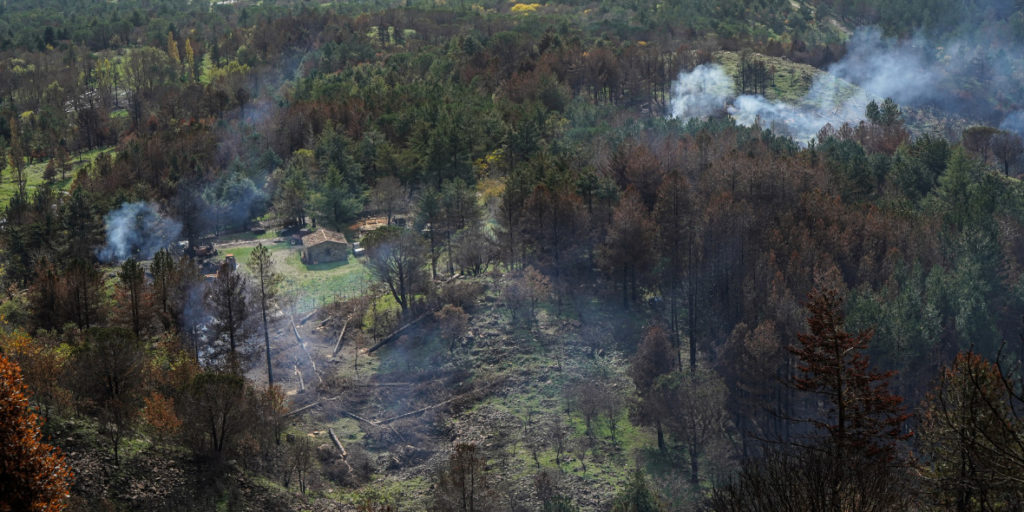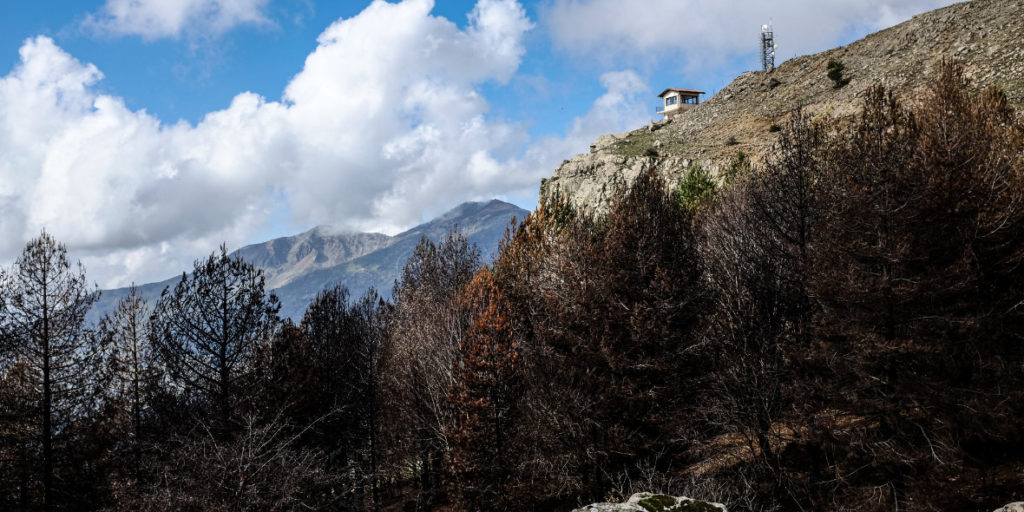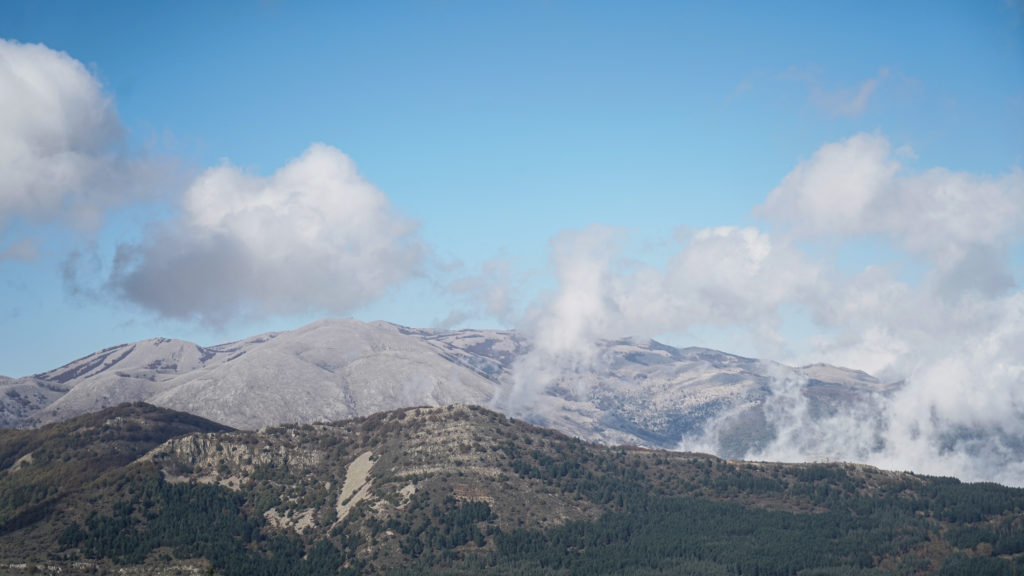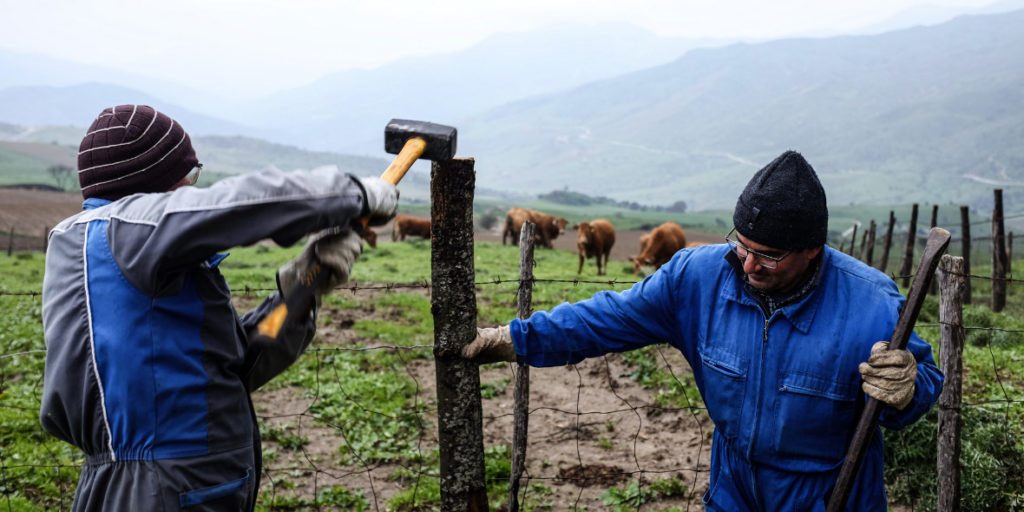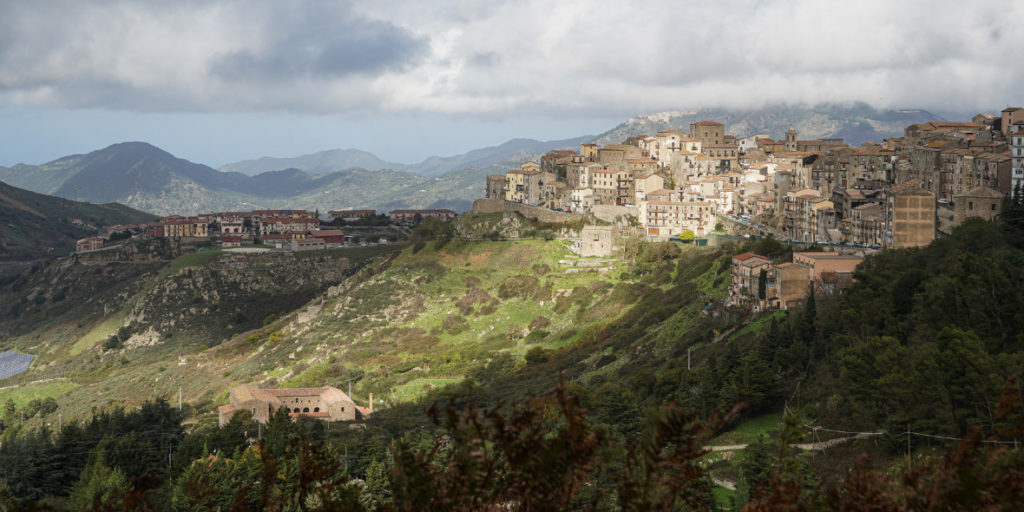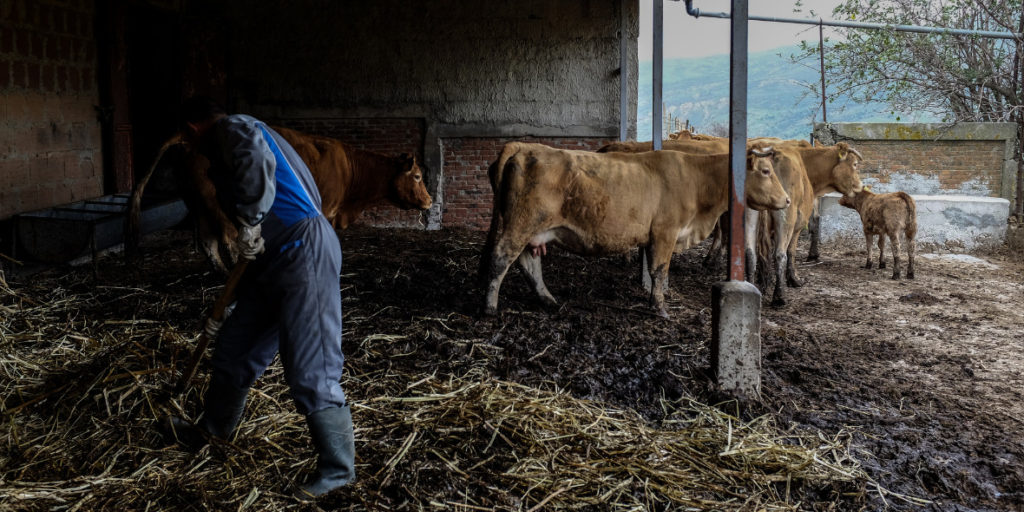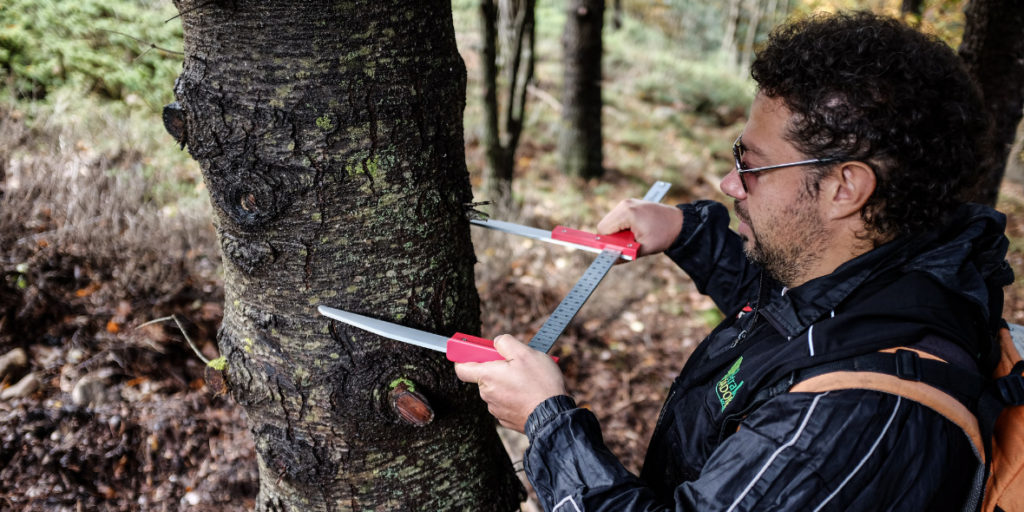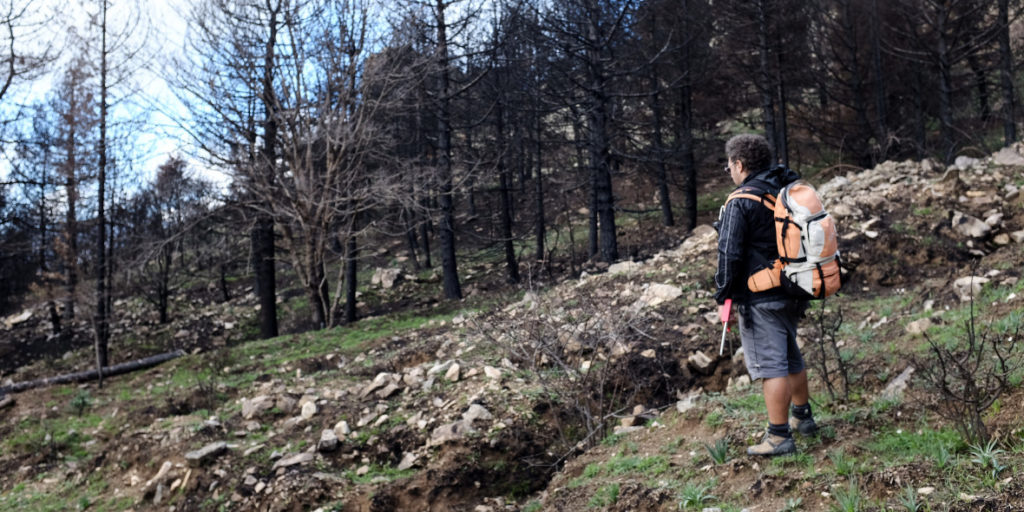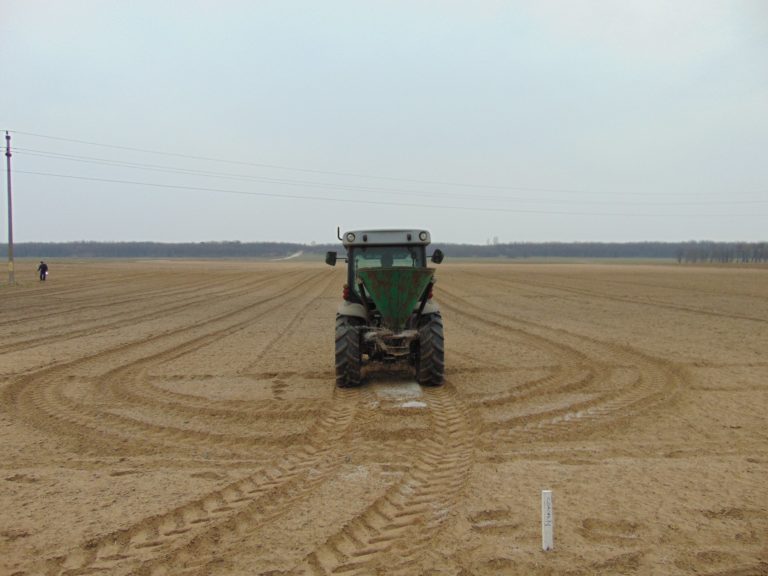With two thirds of Sicily at risk of desertification, even the highest peaks of the Mediterranean’s largest island are undergoing irreversible changes. The inhabitants of the Madonie mountains are now facing unprecedented fires that, while often manmade, are exacerbated by heatwaves like ‘Lucifer’ which took place over the summer. Residents and workers in the area - once the source of ice for the world-famous Sicilian gelato - now find themselves struggling against climate change, with little assistance from politicians.
In November the fresh, green pastures of the Madonie mountains look just like the Alps. And yet, just over three months ago, everything visible here was scorched during the ‘Lucifer’ heatwave, which provoked fires across the eastern Mediterranean, from Turkey to Greece to Southern Italy. The fields that surround the farmhouse “were burnt like petrol” recalls Antonio Raspante as he nervously patrols the perimeter of his property, which had its fences burnt. “I’ve never seen a fire that big.” He’s keen to explain the impact of the flames which, after the autumn, are no longer so evident but which are nevertheless devastating. In mid-august the valleys and southern side of the Madonie were coloured black like coal and grey with ashes as far as the eye could see, encompassing farmhouses, barns and cottages even higher than the limits of the Alpine forest, at more than 1400 metres above sea level.
Antonio Raspante is 74 years old and he’s lived in the Madonie since 1965 when he left Palermo to move into his family’s early 20th Century farmhouse so he could dedicate his life to rearing cattle. Nowadays, his children are running the business, raising the cows and calves in vast uncontaminated pastures. “If it wasn’t for them I would have given up this time. I wouldn’t have had the strength to confront the situation.” Antonio, a strong, stoic character, tries to cover up the crack in his voice. Despite having formally retired, he struggles to sleep at night. He can’t think of anything but how to stop the events of the previous summer from happening again.
The cows that survived are still recovering from the trauma of the blaze. While a few of them did manage to give birth, they have not been able to produce healthy milk due to shock and, as a result, their calves have died. In a few cases the fire burnt-off their udders. These damages cannot be reimbursed as they are not strictly speaking attributable to the blaze, and they represent a serious economic loss for the business.
Antonio’s family farm lost a quarter of its animals. Out of a total of eighty cows, five were burnt to death. Another fifteen were seriously injured; in the panic they tried to charge straight through the fences and, consequently, they had to be shot to prevent their needless suffering. “We treated the injuries to the udders and legs using ointment, but in some cases the wounds were just too severe.” The lower part of the cows was the most badly damaged, because the ground became incandescently hot and the animals didn’t know where to run. Amidst the flames and smoke it was impossible to work out where the panicked cows had ended up. It was impossible to save them. It’s difficult to look at the photos that Antonio’s family have taken. The charred burns on the udders and legs of the worst cases speak for themselves: nothing could have been done to save these animals.
Other creatures also suffered as a result of the fire, explains Marilina Barreca, provincial manager of Coldiretti, Italy’s biggest farming association. “The bees in this area also flew away and are gone for good; their hives were burnt down. It was a big loss for local honey production.” Marilina, who is also a farmer and manages an agricultural business, says that her animals can no longer make use of the nearby wood where, normally, during winter, they would take refuge from the rain and cold. Her business has been forced to halt investments which were already in the works to increase the number of dairy cows.
The blaze that hit the Madonie mountains started in various isolated points which then came together to form a single vast inferno. Like most of the fires that occur on Sicily, it was manmade; an intentional, planned act. There are various hypotheses as to who started it. Locals refer to the fires as ‘criminal’, but it’s not clear who is responsible. Historically, the communities of the Madonie have close links to Cosa Nostra, and in recent years a few clans have been trying to re-organise and re-establish themselves in the area. Speaking with residents, one gets the impression that much of the population would like to escape from this shadowy influence of organised crime. For the time being, however, it doesn’t seem that there are any investigations underway.
The one thing that everyone is sure about is that the climate crisis is adding to the already difficult conditions, putting strain on the fragile economy and the social fabric too. Summer drought periods are increasing year on year, and so too are the heatwaves which exacerbate the spread of flames. Due to the dry vegetation and undergrowth, the whole countryside is at serious risk. The conditions are therefore in place for fires of a size that has never been seen before in the area. Incidentally, it’s also worth considering that the kind of phenomena we’re seeing today in the south will soon, in just a few years, begin to spread to Central Europe.
“We need a separate strategy to protect our lands and put a stop to the lawlessness”
I’ve tried to counter the climate crisis for much of my professional life, including leading Greenpeace’s global climate efforts. But it troubles me when fires in Sicily are framed predominantly in terms of climate, when the vast majority of the fires – well over 80% – are intentionally set. This summer, determined criminals tried to set fire to the nature reserves of Cava Grande and Pantalica in southeastern Sicily (also a magnificent Bronze Age archeological site) day after day until they were finally successful in provoking devastating flames.
A few shepherds have been detained for creating more grazing land by burning wooded areas, but the unprecedented scale and frequency of these fires point to a more organized plan. The dynamics may vary from one part of the island to another, but in certain areas, pastoralist mafias set fires to expand grazing land or to favour regrowth of edible grasses, thereby pushing the land toward rapid desertification. Speculative interests – possibly attracted by tens of billions of euros destined to Sicily through the Recovery Fund – may be burning areas to be able to buy charred land cheaply for a variety of uses. Whereas law 353/2000 is meant to prevent sale of fire-ravaged land for a period of 10 years, there are fears that municipalities are not documenting the fires or applying the law. There is speculation that the fires may be set to make the public forest service (Forestale) look bad and push for privatizing Sicilian land and park management.
The Italian Senate has proposed the creation of a forest and environment police force to reinforce investigations, but we are still waiting for answers.
In previous decades, the bulk of fire-related funding went to preventing fires. Nowadays, the incentives and the spending have shifted. Systems of prevention have been dismantled, and private companies now manage and fly the state-owned fire-fighting planes and helicopters. These companies – previously investigated for fraud and collusion – literally make money on wildfires. The more indomitable fires there are, the more money they make. In 2020, Italian taxpayers paid tens of millions of euros more than if the planes had been publicly managed. Indeed, news outlet Il Megafono launched this petition calling for public management of the fleet.
We absolutely need to zero out our emissions, and immediately. But we need a separate strategy to protect our lands and put a stop to the lawlessness – some of it very pos
Working in worrying conditions
According to estimates, 70% of Sicily is at risk of desertification, mostly the inland and southern areas. The Madonie and the attached Nebrodi mountain range, which spread along the north of the island are, together with the volcanic Mount Etna, the last green bulwarks which guarantee the water supply to the region. They are island’s ‘green lungs’; the source of the streams that flow towards the dry interior part of the region. It is they that supply the farms and villages.
For four centuries, the Madonie have been a source of ice which the population has used to make the world-famous Sicilian gelato. Before the invention of mechanical devices, it was on these exact slopes that winter snow was stored in ditches dug into the mountain. The snow was crushed to create blocks of ice. Workers then cut away at these blocks in the spring until the late summer. They transported them as rapidly as possible, during the night, using donkeys, to the nearby towns but also to other parts of Sicily, like Palermo, on the coast, 85km away. For a few years now, however, the principle point of collection, ‘The Princess Neviera’, at 1880m altitude, does not produce snow into the summertime.
The Mediterranean climate is getting ever-hotter, with droughts lasting longer and more frequent torrential rain showers. “I was here that afternoon in August when the flames rose up around Gangi (5km away). There was an abnormal heatwave, with temperatures around 42 degrees and the vegetation, including the pastures, had been totally dried out for two months. With the scirocco wind blowing strong the fire’s path was moving quickly towards us. I understood then that it would reach the farm.” A few of the cows were moved to safety. Antonio’s son-in-law and employees tried to dig a trench in the field to divert the flames, but it was useless. They closed themselves in the farmhouse to wait for Lucifer to pass. Half an hour later the surrounding countryside was entirely burnt-up.
Today the consequences of the fire are barely perceptible. The pasture looks almost normal, despite the lingering nervousness of the cows. All the fences have been burnt, though, so three employees are planting wooden stakes to demark, once again, the 300 hectares of uneven land which the animals usually graze on. This area is not easily accessible by car. The newly grown grass is still too short for the cows to eat and winter will also slow things down. The animals will therefore have to eat hay that’s brought from other areas of Sicily. In fact, the lack of animal feed was the first emergency that needed to be confronted after the fire. A few bales were sent across by other Sicilian farmers and by surrounding areas in the form of donations and a crowdfunding campaign. “The degree of solidarity and coordination from the other farmers and the rest of the island was surprising. The donations allowed those who had lost everything to purchase hay. The Bishop of Cefalù [ed. a town near to Palermo] also sent a sizeable sum.”
“I’ve seen a lot of them over the years, but never of this size”
Antonio’s family is just one among many farming families in this valley that were caught off-guard by the events of this summer, and who are dealing with the long-term effects of the blaze. Added to this there is the collective shock, experienced by the entire community. The fire reached right the way up to the villages of the Madonie; many people were evacuated for their safety, as in Petralia Soprana, Gangi and Geraci Siculo, which are medieval towns, among the most beautiful in Italy, and which are almost entirely dependent on tourism and agriculture.
The climate crisis is transforming the environment in the Mediterranean more quickly than in other parts of the world, and the rate of temperature increase in the area is 20% higher than the rest of the planet. During the Lucifer heatwave, Sicily reached the highest temperature ever recorded in Europe: 48.8 degrees Celcius. According to the European Forest Fire Information System (EFFIS), the research group of the European Commission for monitoring blazes across the EU, Italy lost 158,000 hectares of land last year (equivalent to the entire area of Greater London).
Sicily was by some distance the most affected region in 2021, amounting to half of these losses on its own. While fires in the area are nothing new, this was something else. “I’ve seen a lot of them over the years, but never of this size,” says Antonio. At the same time, parallel to this, the increase in the temperature of the Mediterranean sea is fuelling a growth in extreme pluviometric events such as the so-called ‘Medicane’ [Mediterranean Hurricanes], cyclones which take on the power and characteristics of hurricanes and which bring devastating flash floods, as recently happened in Catania. Contrary to what one might expect, a vast quantity of rain concentrated in a small space of time actually accelerates the process of desertification by pushing fertile layers of soil into the rivers and therefore the sea. The same thing happens when the mountains, stripped of grass by the fire, are hit by heavy rainfall.
“Fifty years of reforestation policy destroyed in a single day”
“The rain that fell a few weeks ago did little to help the areas hit by the fire, because the land cannot absorb so much water in such a short space of time,” says Gaetano La Placa, a forestry specialist. Gaetano is occupied with protecting and repopulating a tree that is native to the area: the Madonie Fir. Today, only 30 adult specimens remain. Beyond farmers like Antonio and his family, the park itself has suffered enormous losses. Gaetano works for the Life4Fir project, which was funded by the EU and coordinated by the National Research Council (CNR). He is busy on a site inspection: analysing the effect that the fire had on the specimens of native and exotic fir trees in the wooded area of the park. “Fifty years of reforestation policy destroyed in a single day,” Gaetano exclaims as we proceed on-foot towards the most badly-hit part of the park. He’s brought a few measuring instruments and a notebook with him to count the burnt trees. Observing the scale of the damage he is visibly dejected. Fortunately, though, the blaze did not kill all the trees and this gives him a little hope. Gaetano indicates the different types of trees in the park: those which are native and others which have been planted in the past, before a comprehensive forest-plan was in place.
The forestry specialist knows these mountains like the back of his hand. He was born and raised here. And he’s determined to conserve the heritage of the ecosystem which is besieged by both human activities and climate change. In fact, the combination of these two factors is literally stripping the mountain, as can be seen on the peak of Pizzo Carbonara which he points out on the horizon. The blaze burned 5% of the Parco delle Madonie, around 2000 hectares. The area is on the other side of the valley, where Antonio’s family’s land is also located. “One tree is not the same as another,” says Gaetano, adding: “some of them are flame resistant, which is to say they can grow back easily after a fire. These trees contain highly flammable resins. They are plants that recover faster than other natives with a slower ‘life cycle’, such as the Madonie fir which grows much slower than black pines.”
Unfortunately, the fire also burnt a parcel of land near to Geraci which was functioning as a natural plant nursery for 30 Madonie firs between 10 and 15 years old; these were specimens that could have reproduced and repopulated the entire area. Gaetano and the Life4Fir project’s goal to conserve Sicilian native fir trees has been further hampered by extreme climate changes.
In terms of biodiversity the Madonie mountains represent a small Alpine enclave in the Mediterranean which, bit by bit, is being replaced by a different climate. The species are forced to adapt as well as they can, but not all are managing it. The beech tree for example – which has always grown at this altitude – is moving higher and higher in search of a more appropriate environment. On Mount Etna this tree has already ‘migrated’ to a height of over 2000 metres. Given that the Madonie are less tall, they risk vanishing from the area altogether. The peak of Pizzo Carbonara, the highest summit in the Madonie, at 1979m, appears naked without trees. By now, the layer of fertile land has been gone for generations, eroded by the rain and the wind. Not to mention human beings who for centuries have taken the best wood in these forests to use as fuel or as a building material.
Biodiversity at risk
Laetitia Bourget walks towards the Park entrance on a ghostly morning with fog enveloping the burnt trees. “The Rosalia alpina is a rare beetle, it prefers old, high altitude beech woods and for this reason it is also at risk due to climatic factors. In Sicily we have the southernmost beech woods of the whole continent. Here, this tree only grows at 1300m above sea level, while in northern Europe one can already find it at sea level. Because it needs the cold.” Laetitia is French and she moved to Sicily twelve years ago. She is a wildlife guide and works with her partner Mario in the Park. Together they take people around the Madonie to appreciate its beauties as, in recent years, the area has become a tourist destination in its own right. Laetitia has fallen in love with the landscape and local culture. But she is not alone. Sicilians themselves are now coming from nearby cities, like Palermo, to rediscover these mountains.
Laetitia confirms that the impact of the fires has been enormous: “Not only for large wild animals but especially for the insect population which is unable to move quickly. Their disappearance, while less evident, has serious repercussions for the entire ecosystem.” A few types endemic to the area risk disappearing as the climate changes. Laetitia volunteers for the European Butterfly Monitoring System, a database to which she contributes information about the local species. The presence or absence of certain types of butterfly serves as an indicator of the health of the environment as a whole. “The Parnassius, Polommatus and Hesperia live in environments starting from around 1600m. The increase in temperature is reducing the area where they can find the right habitat (and in particular their host plants). At a certain point, they will no longer be able to rise in altitude.”
Laetitia’s partner, Mario, was born and raised in Castelbuono, another village in the Madonie. In addition to his work as a tourist guide he makes a living by extracting manna. This is a kind of sap that one can obtain from the ash tree, and which is used as a natural sweetener. This is a tradition that goes back millennia. The Greeks and Romans used to call it “honeydew” or “the liquid of the stars.” The extraction happens via an incision in the trunk of the tree which is made during the summer months, and the harvest depends greatly on variations in weather. There are twenty or so producers in the area. The uncertainty that they must now confront in the summer, from the excessive heat which blocks the sap, to the sudden rains which dissolve the manna, are putting increasing strain on the harvest and the economic activity that depends on it.
Despite the fact he’s a pensioner now, and even though his two sons are continuing the work, Antonio can’t keep himself away from the family farm. “The scale of the economic damage and the work necessary to rebuild will only be clear in a few years’ time: it’s not like changing a computer,” he says. For now, the business will carry on despite the shock. Today, a whole new generation of farmers is trying to continue an ancient way of life based on harmony with natural rhythms. Knowing how to interpret the climate on which cultivation and feeding depends is part of this. But the climate does not seem like it will stabilise in the years ahead. The farmers of the Madonie will therefore have no choice but to adapt to both the high temperatures and frequent fires. There are fewer and fewer people now leaving the cities to go and live in rural areas, as Antonio did sixty years ago. Yet, nevertheless, Antonio continues to talk about his Madonie, mountains which he has seen change so much over the course of his life, with the same passion and concern as ever.
Romania's growing desert
The ‘Oltenian Sahara’ in Southern Romania is an area of 800 square kilometers, covered with thin sand. Over decades it has been gradually replacing the black locust forests and lush grasslands that used to run alongside the Danube.
First to blame are the communist regime’s intensive agriculture policies, which felled trees and drained lakes in order to irrigate the sandy land. On top of this, increasing temperatures over the years have intensified the desertification process to the point where, today, the wind blows sand to Bucharest, the capital, 200 km away. Wheat and corn cultures are now threatened in this “bread basket of Europe.” Biodiversity is also at risk as a result of the increasing scarcity of trees.
In the town of Dabuleni, spread over 12 hectares, lies the ‘Sand Museum.’ But the town also hosts the ‘Research and Development Station for Plant Culture on Sands,’ created in the 60s by the Romanian state. There, researchers work with local farmers to cultivate fruits and vegetables which can adapt to dry areas: the watermelons of Dabuleni, known across the whole country, but also sweet potatoes and peanuts. More recently, the station has been experimenting with cheap, modern irrigation systems and cultivating other plants such as kiwi, dates and olives that could adapt to climate change and to future arid areas in Romania and beyond.
While adaptation is vital in this region, it’s also vital to contain desertification. NGOs, entrepreneurs and municipalities are all working to develop reforestation projects with this goal in mind. However the lack of national initiatives, and reluctance of farmers to sell their land, means this will be a serious challenge in the long term.
Published on 20 December 2021.



